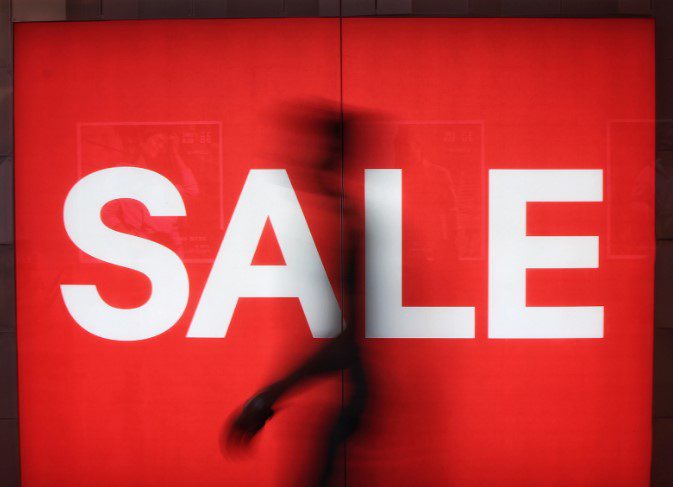Social media made me buy it!
In an age where budol has become synonymous with impulse buying, we take a look at the subjective triggers and cleverly nuanced marketing strategies that make products we see online harder to resist.
You might even learn how you can overcome the impulse to add to cart (if you want to).
Reason 1: Impulse buying = mood boost!
Daily stressors have long left many feeling stretched thin. This emotional strain tends to cause cravings for instant gratification and mood boosts, often tangibly manifested through impulsive purchases.
Many netizens have grown to embrace this practice as “self-care” or “retail therapy” due to its feel-good benefit. Receptiveness varies depending on experiences, personal benchmarks of ROI expectations, and changing taste preferences. For instance, short-lived or affordable purchases (like the typical store-bought “tsitsirya”) make the post-purchase regret minimal, Pricier items, or items that you hope would last longer but don’t, may push buyers to look for other suppliers.
Reason 2: You don’t want to miss out kasi ngayon lang magse-sale.
Everyone loves bespoke pieces and discounts. And brands know that. Therefore, to win us over, they present us with exactly what we want. The only thing is that the ticking clock or low inventory erodes our thinking and compels us to fixate on acting quickly and impulsively to avoid missing out on an opportunity that we frequently rationalize “may never come again”. The item in question may not even align with our immediate needs!
Pro tip: Some brands may just be saying they’re going on a limited-time sale but may conduct another one at another time. Time your purchases right – without the influence of FOMO!
Reason 3: You don’t want to miss out because everyone else is on it, too.
When we see others – particularly individuals whose opinions we value – satisfied with their purchases, we naturally want similar experiences (e.g., convenience, happiness) for ourselves. This is because we have formed positive expectations based on what we have observed alone.
Social media has become a catalyst for this behavior. With brands using ‘organic’ content, soft-sell ads, and UGC, it is easier than ever to get us to buy their products or services. You could simply be going about our daily “doom scroll” and come across a friend’s random product review. Before you know it, you’re adding to cart with the idea that you don’t want to miss out on the things enjoyed by the people you value. The social ‘acceptance’ alone is enough to justify the expense.
Reason 4: Your favorite influencer told you so.
If it’s not our friends and loved ones leading us to impulse buy, it’s a random stranger on the internet called an ‘influencer’.
Make no mistake: the power of influencer marketing is real. As we mentioned earlier, brands have learned to collaborate with personalities and industry experts to get consumer buy-in. Look no further than Heart Evangelista. Every cosmetic she endorses practically almost sells out!
Reason 5: You feel like you’re supporting something important to you.
If you think the first few reasons you impulse buy sound sinister, there are not-so-sinister reasons, too. People also tend to impulse buy as a way to support a good cause.
These brands, movements, and advocacies capitalize on sympathy and empathy to make a sale. Typically, these proceeds go to beneficiaries that need the help. When you witness a brand making a positive impact, it feels good to know you contributed to that somehow!
Take Rural Rising, for instance. This independent produce supplier frequently posts ‘rescue buys’ – rescuing produce from farmers who would otherwise be unable to sell due to a variety of factors and offering them to consumers who can get them for a cheaper price. A bulk of the proceeds go to the farmers, too! Netizens always show all-out support – a lot of RuRi’s produce quickly gets sold out!
That’s not to say these advocacies and movements are all trustworthy. Do your due diligence and research and ensure that these aren’t scams. Look for trustworthy and transparent movements you can safely support. They usually post transaction receipts and proof of the impact of your support.
Reason 6: Atmospheric marketing
- Store layout and design – If you feel compelled to spend hours in malls, that’s by design! Generally, retail environments are subtly (but meticulously) organized to nudge us to spontaneous purchases. These are achieved through strategic product placements, grouping a product category to one floor for easy browsing, removing obstructions that would stop search (like seats), and the overall store layout to guide your path.
- Background music and scent – Ever found yourself lingering in a store because your favorite artist’s tracks came on? Or visiting places frequently because of certain scents that make you feel good? That’s no accident! These sensory elements are chosen to create an inviting atmosphere that uplifts the spirits and lowers inhibitions, making it easier to browse longer and ultimately make a purchase.
Reason 7: Other cognitive biases
- Anchoring Effect – this refers to our tendency to accept the initial information encountered (the “anchor”) when making decisions. This is similar to reason #2. Prime examples include (1) buying something ‘on sale’ to ‘save’ when you’re actually just spending, and (2) lining up for a newly-opened brand that you’ve never heard of just because other people are joining the queue as well.
- The Diderot Effect – this starts as a single purchase that acts as a catalyst, igniting a spiral of unplanned spending. Perhaps, it is just needing a black dress for a fancy fare, but then the realization hits: it feels incomplete without accessories, shoes, a bag, and so on. Suddenly you’ve snowballed into buying your entire cart.
Strategies to overcome impulse buying
If you’re a consumer and you don’t want to give in to brands’ marketing strategies and spend, read on.
If you’re just here to understand why you want to spend your next paycheck on that item you’ve been eyeing but don’t intend to turn that purchase away, scroll past.
- Practice awareness and mindfulness – Identifying the factors that trigger your urges (is it FOMO or urgency?) halts the unhealthy pattern of operating on autopilot from gaining further momentum. This raised awareness can extend to other mindful decisions, guiding you toward a healthier spending mindset.
- Set shopping limits – Healthy boundaries, such as capping your budget or screen time, are about staying grounded. This ensures you do not veer off from your priorities and financial goals – and that is something “future” you will definitely “thank” you for! Pro tip: use that social media time for good! For instance, you can browse #FinTok for financial advice (i.e. how to curb your bad shopping habits).
- List it down – Have you spotted something you want but do not immediately need? Jot it down or (for online shopping), leave it in the cart for now! And if after a few days (or weeks), it is still on your mind, then consider giving yourself the green light to take that leap! After all, the idea is intentionality in curating a line-up of items you are guaranteed to love and use – reducing the probability of a hasty, regretful purchase that will end as clutter!
Just remember: giving in is not necessarily a bad thing! It is perfectly okay to treat yourself because, deep down, this behavior stems from innocent intentions (snagging hefty savings), our survival instincts (pursuing acceptance), and compelling marketing content that your favorite brand put out. The real dilemma is when impulse buying becomes excessive (resulting in hoarding and clutter) or detracts you from your goals. So, just as with anything else, find that healthy balance!
And if you’re a brand that’s ready to Connect Your Story to your impulse-buying audience, work with NGP-IMC today. We’ve got the inside scoop on how to ignite customer purchases!

Gayle is a copy editor and contributing writer for NGP-IMC, covering all the latest buzz around PR and digital marketing. Previously, she’s penned personality-packed ad copies, headlines, print journals, and articles for industry-leading brands and publishers such as foodpanda, Under Armour, Klook, and more! Additionally, she’s profiled Olympic gold medalist Hidilyn Diaz, developed scripts for South Korea’s SK-Zic and interviewed female riders to shed light on their experiences at the forefront of dismantling gendered expectations within the male-dominated delivery space.


